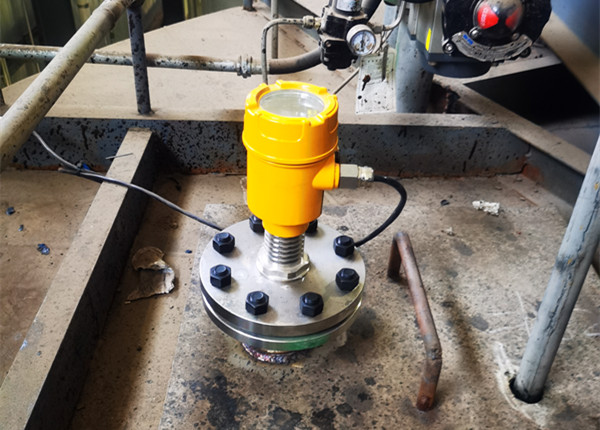Radar level gauges have become an important tool for monitoring liquid levels in storage tanks due to their high accuracy and reliability. However, during actual operation, especially in tanks with short pipes, radar level gauges are often affected by various interference signals, which may cause deviations in measurement results.
To ensure accurate measurements, effective measures must be taken to eliminate or reduce these interferences. Below are several common strategies and methods for improving the accuracy of radar level gauges in such environments.

Choose the appropriate installation location: In order to avoid reflections and interference signals generated inside the short pipe, it is crucial to correctly select the installation location of the radar level gauge. It is generally recommended to install the level gauge on the side wall of the tank rather than on the top, as this minimizes the impact of reflected waves in the short pipe on the measurement. Use a waveguide: In the case of a short pipe, a waveguide can be installed to guide radar waves directly downward.
Waveguides can limit the propagation path of radar waves, thereby reducing interference caused by short pipes. Adjust the frequency of the radar level gauge: The frequency of the radar wave will directly affect its penetration ability and sensitivity to interference.
By selecting a lower frequency, the ability of radar waves to penetrate the medium can be enhanced and the impact of the internal structure of the short pipe on the measurement can be reduced.
Application of microprocessor technology: Modern radar level gauges are usually equipped with advanced microprocessors that can identify and filter out interference signals through software algorithms. Using a microprocessor for signal processing, valid echo signals can be distinguished from interference signals caused by short pipes.

Multiple echo analysis: The use of multiple echo tracking technology, that is, analyzing multiple echo signals instead of a single echo, helps to identify the real liquid level echo.
This method can improve the system’s adaptability to complex environments and reduce errors caused by short pipes. Regular calibration and maintenance: Even after taking all of the above measures, regular calibration and maintenance of the radar level gauge is necessary.
By checking and adjusting equipment parameters, you can ensure that the level gauge maintains optimal performance over the long term. Use shielding technology: Using shielding material on the probe part of the radar level gauge can effectively absorb or reflect the interference signal inside the short pipe, thereby protecting the main signal from pollution.
Consider mechanical design improvements: If conditions permit, the source of interference can be reduced by modifying the design of the tank’s short nozzle. For example, increasing the length of the nozzle or changing its shape may help reduce the occurrence of internal reflections and interference.

Through the comprehensive application of the above methods, the interference signal generated by the short pipe of the storage tank can be effectively eliminated or reduced, and the measurement accuracy of the radar level gauge can be improved. When implementing these strategies, careful analysis and debugging are required based on specific application scenarios and tank characteristics to ensure that the final measurement results are both accurate and reliable.
